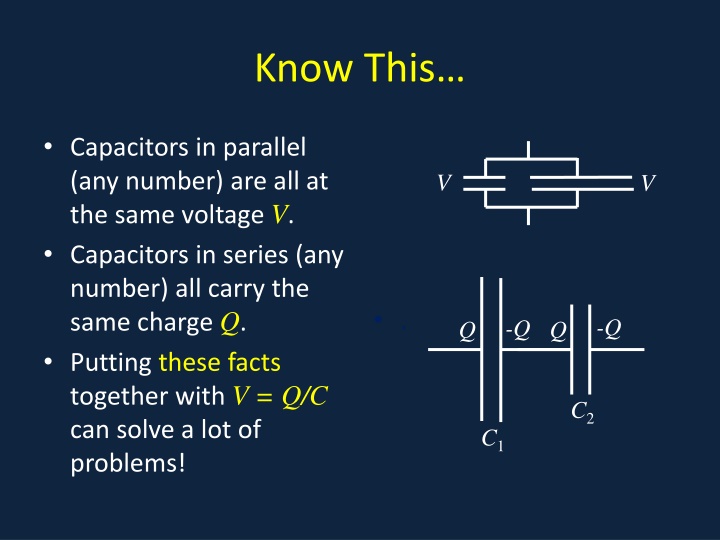
Capacitors and Electrical Concepts in Circuits
Learn about capacitors in parallel and series, current density in wires, resistance calculations, and more in this educational content. Explore the concepts behind conductivity, power output of bulbs, and material resistivity differences between copper and aluminum.
Uploaded on | 2 Views
Download Presentation

Please find below an Image/Link to download the presentation.
The content on the website is provided AS IS for your information and personal use only. It may not be sold, licensed, or shared on other websites without obtaining consent from the author. If you encounter any issues during the download, it is possible that the publisher has removed the file from their server.
You are allowed to download the files provided on this website for personal or commercial use, subject to the condition that they are used lawfully. All files are the property of their respective owners.
The content on the website is provided AS IS for your information and personal use only. It may not be sold, licensed, or shared on other websites without obtaining consent from the author.
E N D
Presentation Transcript
Know This Capacitors in parallel (any number) are all at the same voltage V. Capacitors in series (any number) all carry the same charge Q. Putting these facts together with V = Q/C can solve a lot of problems! V V . -Q -Q Q Q C2 C1
Microscopic Picture of Conductivity The total current down the wire is I; if we assume it s uniform over the cross section area A (which it is) there is a current density j = I/A. (units: amps/m2) A constant E field gives a steady current. This means the electrons are bouncing off things, like a sloping pinball machine, otherwise the current would keep accelerating.
Question What is the resistance of a 12V, 36 Watt headlight bulb? A. 3 ohms B. 4 ohms C. 0.3 ohms
Answer What is the resistance of a 12V, 36 Watt headlight bulb? A. 3 ohms B. 4 ohms C. 0.3 ohms Power of 36W = IV, V = 12 so I = 3. Then I = V/R.
Question Assume the 12V, 36 Watt headlight bulb has a tungsten filament. What is its approximate power output in the first instant it is connected, cold, to the 12V battery? ( ). A. 36W B. 2.4W C. 540W 15 0 T
Answer Assume the 12V, 36 Watt headlight bulb has a tungsten filament. What is its approximate power output in the first instant it is connected, cold, to the 12V battery? ( ). A. 36W B. 2.4W C. 540W Power P = IV = V2/R: R when initially cold is 1/15 of R at operating temperature of 3300K. 15 0 T
Drift Speed Take a piece of copper wire, say 1mmx1mm cross section, 1m long carrying 5 amps. This is 1cc of Cu, about 10 gms, about 1023 conduction electrons (one per atom), about 15,000C of electron charge. Therefore, at 5 amps (C/sec) it takes 3000secs for an electron to drift 1m. Bottom line: the drift velocity is of order 10-4 m/sec. (it s linear in current, and depends on wire thickness for given current, obviously.)
Question The resistivity of aluminum is 58% higher than that of copper. A copper high voltage line has diameter 1 cm. If is replaced by an aluminum line of the same resistance, the aluminum line has diameter: A. 1.58cm B. 1.26cm C. 0.8 cm D. O.64 cm
Answer The resistivity of aluminum is 58% higher than that of copper. A copper high voltage line has diameter 1 cm. If is replaced by an aluminum line of the same resistance, the aluminum line has diameter: A. 1.58cm B. 1.26cm C. 0.8 cm D. O.64 cm area A Remember R = L/A. The power lines have the same length, the aluminum therefore needs 58% more cross-section
